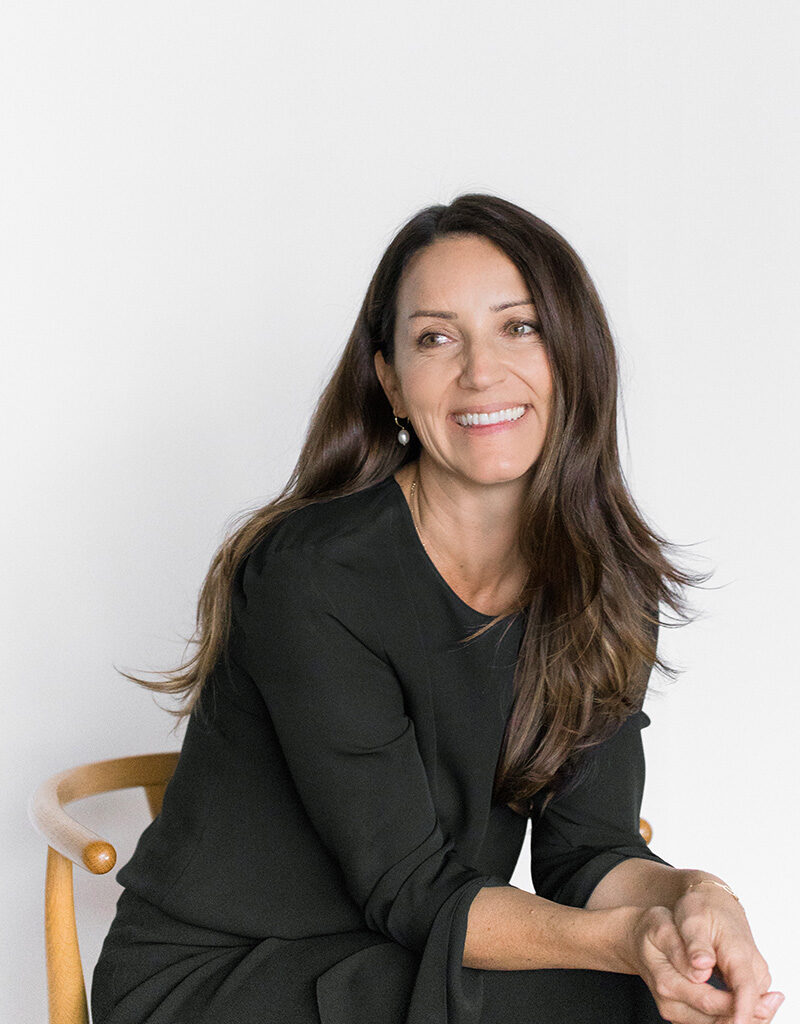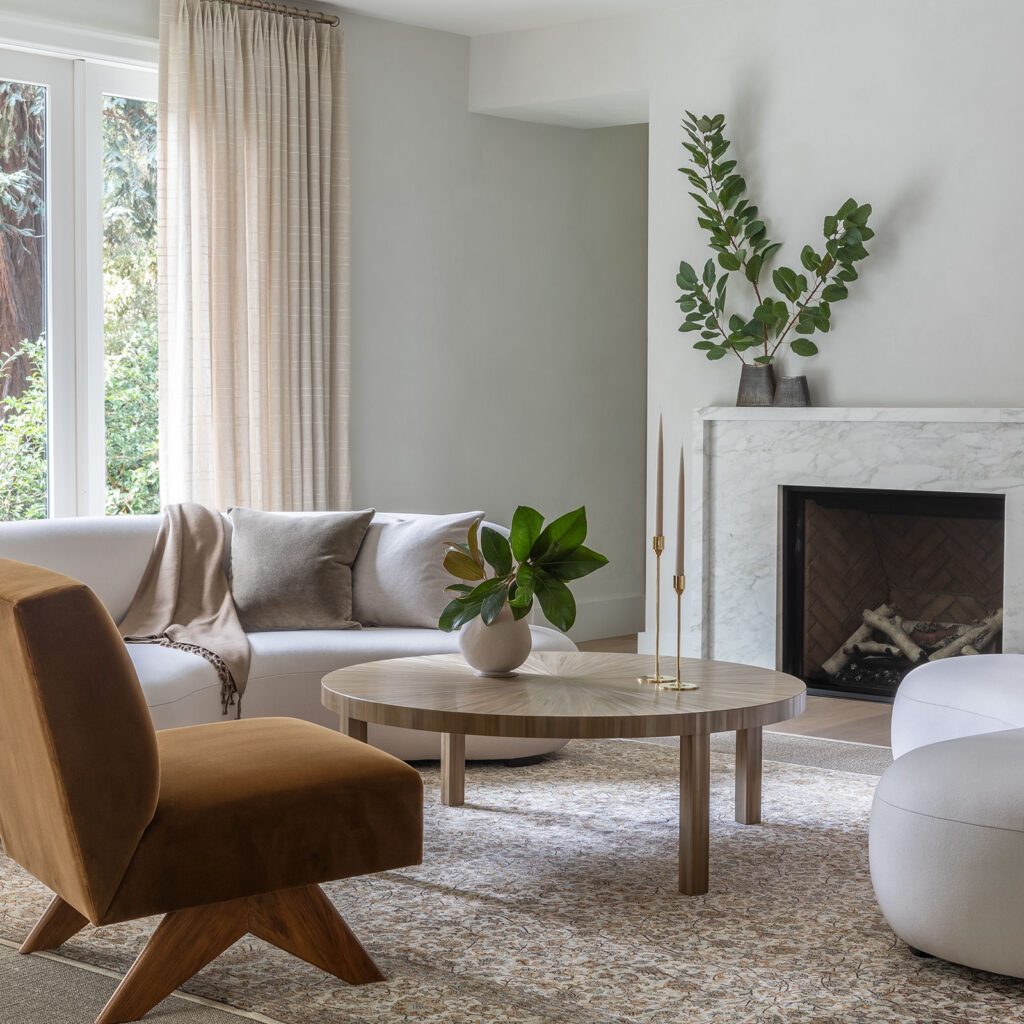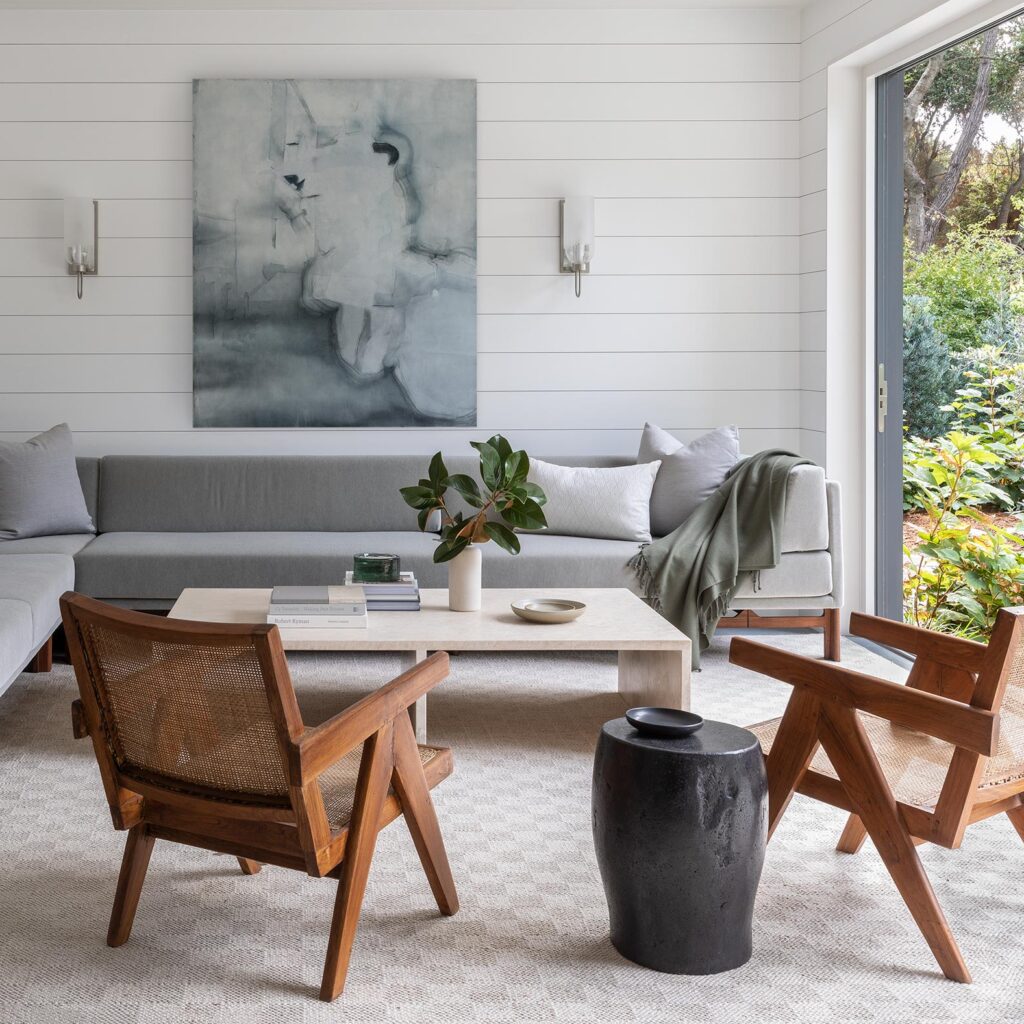One of our greatest joys as a paint contractor is supporting Interior Designers in the artistry that they create for their clients’ homes. The Bay Area is fortunate to have so many talented designers, and especially who are such a delight to work with. In this month’s newsletter, we share our interview with Mead Quin, discussing the details of a project from her portfolio that we were honored to be a part of, “Tuscaloosa Avenue,” as well as delving into her personal vision as a designer, and what it’s like to run a firm with a team of designers contributing to the execution of that vision.


Arana Craftsman Painters: Every designer has a unique style. How would you describe your creative vision? What makes you, you as a designer?
Mead Quin: I think one thing that makes our firm unique is that I didn’t train to be a designer. It was never a path I set out to be on. I studied art, was painting portraits and pursuing my MFA and then life happened and I decided to pivot. Interior design interested me because it’s a creative industry. Little did I know it would be about 20 percent creative and 80 percent managing a business and people!
ACP: That makes sense! Let’s dive into the creative part first: How does your background as an artist impact your design style?
MQ: When I approach spaces, I am looking at them through an artist’s lens. A room is like a blank canvas and I’m pushing and pulling on it as if I were applying paint to it, a little color here, a little depth here, sensing what the lines and the dimensions are calling for, and from that, I’m developing the look and feel of the room. My love for art also informs how much my team and I emphasize it in our designs.
Art is an important part of what we curate for our clients and encourage them to value in our projects. They don’t always feel as strongly about it as we do. But when we can, we include it, both by curating pieces the client already owns and assisting them with selecting new works.
ACP:It seems like questions of acquiring art or other high-quality items and materials will always come up against budget. How do you reconcile that for clients?
MQ: Possibly our most important value at Mead Quin studio is timeless design. Timelessness, beauty, restraint, and serenity all go together for me. Things that are beautiful are often simple, they don’t need a lot of embellishment. When you are seeing the core essence of something, it doesn’t have to be fussy or overdeveloped or ostentatious, there is just a quiet beauty.
From an environmental perspective, I feel like we can do better by our environment if we buy items that are made with care from quality materials that will stand the test of time and can be appreciated over generations. This philosophy costs more up front, but costs less in the long run because you are not having to replace items, and you’re not wasting resources.
ACP: Yes! We feel the same way about the products and processes we use. Longevity, long term costs, and reduced impact on the environment are important factors to keep in mind. Speaking of guiding tenets that help us run our businesses… Let’s get back to the other 80% you mentioned earlier. What is it like to run a team of designers, assistants, and staff?
MQ: I have an amazing team! With any studio, but especially a young one like ours — we just celebrated 10 years — I think at first, in the early years, you’re just figuring out who you are; you’re figuring out how big you want to be; you’re figuring out if you’re going to make it at all.
Of course, there’s turnover; people come and go; especially when hiring new designers — they try us on; they’re in discovery for themselves as young professionals. My goal has been to build a team that would be here for the long haul. I know one can only hold on to people for so long, but one of our designers has been with us for eight years, so that’s something to celebrate! I have a few other people who have been with us for three or four years.
Our current goal is to have two design teams. When a project walks in the door, we assign it to one of the teams which is composed of a senior designer, an intermediate designer, and a junior designer. Together each team is rounded-out in their skill set and can address all of the various needs from design to writing proposals to returning samples. There’s a wide range of tasks for any given project. By employing designers at different levels in their careers, we are able to service all of those different needs.
ACP: How much design autonomy do the teams have? Is the creative aspect all you and they’re managing and implementing, or are they also contributing ideas?
MQ: They’re definitely contributing ideas. But for the teams, I’m the client, right? Our firm has a specific point of view that comes from the way that I see the world. And so, when they’re looking at projects, they’re in charge of bringing their own creative ideas, but they’re also keeping in mind “What would Mead do?” “How would she see this?”
At the beginning of each project, we always make sure that we’re in alignment. We put together a set of adjectives that describe the project, mood boards that create a look and feel, and color stories, so that we are all headed in the same direction. And then we have design reviews every week or sometimes twice-a-week where they show me what they’re working on and I push and pull on it a little bit; say yes or no. And then they’re off and running again; and then we meet again the following week. So, that’s how it works. They have a lot of autonomy, but since the MQ aesthetic is fairly distinct, they’re designing within that parameter.
ACP: Speaking of implementing design, let’s talk about Tuscaloosa Avenue. What were some of the design challenges and how did you overcome them?
I enjoyed the overall challenge of taking this 1990s-built Craftsman home in Atherton that didn’t have a lot of style on its own, and making it beautiful. For example, painting the exterior a dark tone helped the house merge with the landscape — turning it into something serene, and feeling nestled into the property, as if it had always been there.
When we first were brought in by the client, in 2013, we were just updating a few rooms. But about seven years later, during COVID, the client was ready to do a full-scale remodel. We completely gutted the kitchen and all of the bathrooms and re-furnished every room in the house.

One particular challenge was the living room. It was an oddly-shaped room. And the client wanted us to use her heirloom Indian rug, which was rather small for the space, but this was a non-negotiable. Our furniture choices were dictated by the need to incorporate the rug while also wanting to create coziness around the fireplace and yet still have the room be somewhat formal and elegant, because she wanted this space to be a place for entertaining. It’s also the first room you see when you walk in the door, so we wanted it to feel special.
We were working within the constraints of a pretty traditional Craftsman home, but the client herself has a more modern aesthetic. So we were trying to figure out a way to pull some of that modern, clean aesthetic into this more traditional envelope.
We removed the crown moldings and made the doorways taller, which drew more attention to the views of the gardens and allowed more light to come in. I’m always inspired by the connection with nature, like how much can we bring the connection to the outdoors, inside? And we went with a neutral palette with gentle pops of color that create interest, but the effect is very calming overall.

ACP: The results are just stunning! So, returning to where we started, on the importance of art in interior design, can you share some tips for our readers who might be inspired to start collecting?
MQ: I think the first thing is to just get out there and pound the pavement in whatever city you are in, and go into galleries. Gallerists are always so informed and have such a wealth of knowledge about artists, whether national, or international, or local. I recommend exploring the highs and lows, in that sense. A local artist’s work may be less expensive than one that is internationally-known.
Also, thinking about your values is key because art is important to different people for different reasons. For example, we have clients who are really focused on supporting local artists or LGBTQ artists, and then others are more focused on “blue chip” art and resale value.
There is no right or wrong answer. It’s just knowing what matters to you. Because the world of art is so vast, understanding what’s meaningful to you is a good place to start and then getting out and seeing art and talking with gallery owners can be a way to clarify and expand that awareness.
You can work with a designer to help you choose art, and there’s amazing art consultants out there. Or you can use Instagram and filter by hashtags and just get on a trail and go forever.
ACP: Are there particular Bay Area galleries or annual art shows that you recommend?
I would say the annual FOG Design+Art fair in January is important to attend. It’s huge and amazing — with all of these galleries showing contemporary artworks at Fort Mason. There’s around 40-50 exhibitors. So you can see a lot in one fell swoop! (More info: fogfair.com)
I also really love Artsource Consulting and Jody Knowlton (artsourceinc.com). Jody has helped us on a couple of projects. She curated our Decorator Showcase room in 2018.
I appreciate working with Jody because I know what looks pretty and I can talk to the galleries myself and figure out the meaning and make a selection, but also it’s really helpful to have an art consultant who — that’s all they do. So they know all the ins and outs and can explain to you why an artist or a particular piece is significant. Having that information and education can help you determine why you might or might not want to purchase a piece and include it in your collection.
For more images of Mead Quin’s interior design work and many examples of how beautifully art and design play together in her world, visit her website: www.meadquin.com
Click here to view more images of this particular project, inside and out, on MQ’s website.
Past interviews with Mead Quin on our blog: Designers’ Favorites: Mead Quin on White Interiors and Beautiful Books for Cozy Reading Nooks





